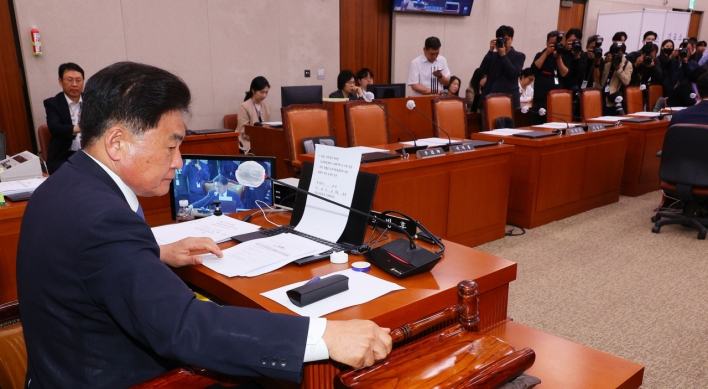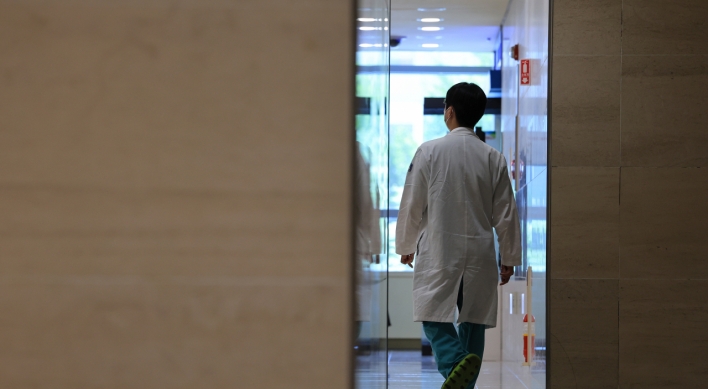For those feeling sympathy for the European Central Bank, which has pretty much been on its own in trying to stimulate demand in the absence of government fiscal policy and investment, a ray of hope has emerged -- in Korea.
South Korea is not doing badly, mind you. The country is a member of the Organization for Economic Cooperation and Development, a grouping of advanced economies, with a per capita gross domestic product similar to that of the European Union average. Last year, it enjoyed growth of 2.7 percent of gross domestic product with an unemployment rate of 3.8 percent.
But it also faces some stiff challenges. Korea has been accused of keeping its currency, the won, artificially cheap, boosting a current account surplus of over 7 percent of GDP. It is saddled with relatively high consumer debt and a heavy industry sector badly in need of restructuring.
Last week the Korean government proposed that the central bank finance, through quantitative easing, a recapitalization of the country’s state banks, which would then be used to restructure Korea’s heavy industry. The idea is for the central bank to buy bonds issued by the state-owned Korea Development Bank, whose role is to lend to industry and which can make its loans to companies conditional on their restructuring to become more efficient. The Korean government advisers reasoned that a QE-funded restructuring effort would leave the companies more competitive in the long-run and boost demand at a time when it has dropped globally.
Initially, the Bank of Korea refused to sign on. QE, it said, is “quite understandable when taking into account a prolonged and subdued economic recovery, with little room for standard fiscal policy.” Bank officials added that Korean law forbids it from buying corporate bonds and that while the government’s plans made sense, “this is something fiscal policy must assume.” The Korean government should borrow to recapitalize the banks for investment purposes, the central bank argued.
On Monday, however, it was a different story. A government official announced that “the government and the central bank are in agreement in that the bank will play a central role in expediting the corporate restructuring effort.”
It would have been better had the government simply issued debt, which the Bank of Korea could also have bought, to finance the investment; but the government argued that direct financing addressed the urgency of the situation.
Under the plan, the Bank of Korea will start purchases of subordinated bonds from the Korean Development Bank. In this way, the government avoids a potentially contentious debate over financing the restructurings. From the Bank of Korea’s standpoint, the arrangement may also be helpful: Korea’s recent fingering as a potential currency manipulator by the U.S. Treasury (it was put on a “monitoring list” along with Taiwan, Germany, China and Japan), makes currency intervention more difficult so the financing plan allows the BOK to push the won lower without incurring the ire of the U.S. authorities.
Whatever the behind-the-scenes reasoning, the Korean debate stands in stark contrast to that in Europe, where governments have failed to use the breathing room of monetary easing to fund a program of investment in infrastructure and human capital capable of relaunching demand. The ECB has been left stretching the envelope of its legal mandate. Europe’s QE has been used to maintain a dismal holding pattern, one that is neither safe nor sustainable.
Korea’s experiment with monetary-policy funded investment just might provide a better alternative. Now if Europe will only look east.
By Jean-Michel Paul
Bloomberg
Jean-Michel Paul is founder and chief executive of Acheron Capital in London. -- Ed.
South Korea is not doing badly, mind you. The country is a member of the Organization for Economic Cooperation and Development, a grouping of advanced economies, with a per capita gross domestic product similar to that of the European Union average. Last year, it enjoyed growth of 2.7 percent of gross domestic product with an unemployment rate of 3.8 percent.
But it also faces some stiff challenges. Korea has been accused of keeping its currency, the won, artificially cheap, boosting a current account surplus of over 7 percent of GDP. It is saddled with relatively high consumer debt and a heavy industry sector badly in need of restructuring.
Last week the Korean government proposed that the central bank finance, through quantitative easing, a recapitalization of the country’s state banks, which would then be used to restructure Korea’s heavy industry. The idea is for the central bank to buy bonds issued by the state-owned Korea Development Bank, whose role is to lend to industry and which can make its loans to companies conditional on their restructuring to become more efficient. The Korean government advisers reasoned that a QE-funded restructuring effort would leave the companies more competitive in the long-run and boost demand at a time when it has dropped globally.
Initially, the Bank of Korea refused to sign on. QE, it said, is “quite understandable when taking into account a prolonged and subdued economic recovery, with little room for standard fiscal policy.” Bank officials added that Korean law forbids it from buying corporate bonds and that while the government’s plans made sense, “this is something fiscal policy must assume.” The Korean government should borrow to recapitalize the banks for investment purposes, the central bank argued.
On Monday, however, it was a different story. A government official announced that “the government and the central bank are in agreement in that the bank will play a central role in expediting the corporate restructuring effort.”
It would have been better had the government simply issued debt, which the Bank of Korea could also have bought, to finance the investment; but the government argued that direct financing addressed the urgency of the situation.
Under the plan, the Bank of Korea will start purchases of subordinated bonds from the Korean Development Bank. In this way, the government avoids a potentially contentious debate over financing the restructurings. From the Bank of Korea’s standpoint, the arrangement may also be helpful: Korea’s recent fingering as a potential currency manipulator by the U.S. Treasury (it was put on a “monitoring list” along with Taiwan, Germany, China and Japan), makes currency intervention more difficult so the financing plan allows the BOK to push the won lower without incurring the ire of the U.S. authorities.
Whatever the behind-the-scenes reasoning, the Korean debate stands in stark contrast to that in Europe, where governments have failed to use the breathing room of monetary easing to fund a program of investment in infrastructure and human capital capable of relaunching demand. The ECB has been left stretching the envelope of its legal mandate. Europe’s QE has been used to maintain a dismal holding pattern, one that is neither safe nor sustainable.
Korea’s experiment with monetary-policy funded investment just might provide a better alternative. Now if Europe will only look east.
By Jean-Michel Paul
Bloomberg
Jean-Michel Paul is founder and chief executive of Acheron Capital in London. -- Ed.











![[Kim Seong-kon] Democracy and the future of South Korea](http://res.heraldm.com/phpwas/restmb_idxmake.php?idx=644&simg=/content/image/2024/04/16/20240416050802_0.jpg&u=)








![[Today’s K-pop] Zico drops snippet of collaboration with Jennie](http://res.heraldm.com/phpwas/restmb_idxmake.php?idx=642&simg=/content/image/2024/04/18/20240418050702_0.jpg&u=)